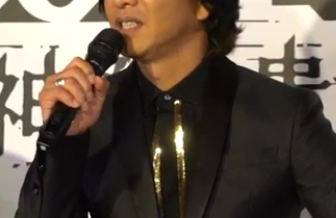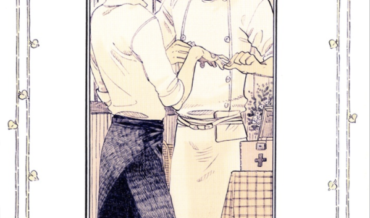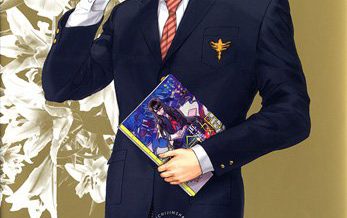Associate Professor, Department of Japanese Studies, National University of Singapore
The word shōjo conjures images of both an innocent teen girl in a school uniform and a sexualized female character, both the fictional fighting girls of anime and the love-struck girls of shōjo manga. The word shōjo, written using the characters for “small” and “woman,” is usually translated into English as “girl,” but it refers specifically to a teenage girl between childhood and adulthood (Imada 2007, 5). Like the concept of adolescence itself, the word shōjo is modern (Shamoon 2012, 2). With the coming of Westernization, modernization, and industrialization, there was for the first time a gap, a waiting period—for the middle and upper classes at least—between childhood and adulthood, when girls were sent off to school for a few years before marriage (Watanabe 2007, 134). These privileged girls, visible in public for the first time, became symbols of everything that had changed in Japan. Male observers imagined the shōjo as sexy, but also dangerous. For the girls themselves, shōjo years were a promise of freedom.
The first image of the shōjo was the mid–Meiji period (1868–1912) schoolgirl of the 1880s and 1890s. With her high pompadour, flying ribbons, and formal divided skirt (hakama), she was both alluring and frightening to the men who observed and wrote about her. The shōjo is a central character in foundational works of modern Japanese literature (Shamoon 2012, 14). Tayama Katai, for example, wrote novels and short stories about respectable men, in the grips of an obsession he called “girl sickness” (shōjobyō), disgracing themselves by chasing after schoolgirls.[1] These early shōjo became the driving force behind much of what is now associated with modern Japan, including the development of women’s language (Inoue 2006, 5). Out in public for the first time, the Meiji schoolgirl was the flower of bourgeois girlhood, but her Western education posed a real threat to male control of public and private life (Copeland 2006, 4; Patessio 2011, 68). Like a film star, she was both idolized and degraded.
This view of shōjo as images as opposed to real girls has persisted from the “modern girl” (moga) of the 1920s to the “beautiful fighting girl” (sentō bishōjo) of the 2010s. As Saitō Tamaki points out, the fighting girl that commonly appears in anime lacks inner psychology; she is a lure, a collection of characteristics to attract otaku (2011, 163). Even characters such as Miyazaki Hayao’s Nausicaä from Nausicaä of the Valley of the Wind (Kaze no tani no Naushika; 1984) lack inner life (Saitō 2011, 160). While Miyazaki intentionally directs his films for a general audience rather than otaku, he suppresses the inherent sexuality of the shōjo to create idealized heroines. His characters are part of the shōjo image viewed from outside.
Girls do not, however, see themselves as men do. A wholly separate image of the shōjo emerged in the 1920s in all-girls schools, which were a temporary haven from the pressure of an arranged marriage that awaited girls after graduation. At the time, the two main forms of media and material culture for shōjo were the all-female Takarazuka Revue and girls’ literary magazines such as Shōjo no tomo (Girl’s friend) (Imada 2007, 8). Girls’ literary magazines changed after the Second World War to feature more and more manga, but the postwar genre of shōjo manga developed aesthetically and narratively from prewar girls’ culture, such as “girls’ novels” (shōjo shosetsu) by Yoshiya Nobuko and “lyrical illustrations” (jojōga) by Nakahara Jun’ichi.
One of the first scholars to link the aesthetic of prewar girls’ culture and postwar shōjo manga was Honda Masuko. She describes the shōjo aesthetic as “hirahira,” an onomatopoeic term referring to fluttering, for example of ribbons, long sleeves, or skirts, all signifiers of “girls’ tastes” (shōjo shumi). Honda writes, “as their own representative signs, girls choose images of fluttering movement such as visually prominent ribbons and frills and chains of words which delight the readers with their trembling flow” (2011, 33–34). This aesthetic is seen in the lyrical, fragmented poetry and prose style of both girls’ literary magazines and shōjo manga. Hirahira is expressive of longing—longing for freedom within a strict patriarchy, longing for friendship, for recognition of a culture that was seen by adults as trivial, trashy, and immature. As Honda describes it, “hirahira imagery crosses a range of sensual boundaries, freely fluttering and floating back and forth. It does not belong to the visual, aural, olfactory, or any other sense in particular. Rather it is shared by each sense, and thus blurs the distinction of each from another. It dissolves the boundary between body and outer world and amalgamates body and mind […] By its constant association with ‘another world to be dreamed,’ it blurs the border between ordinary reality and the world of imagination. Ultimately hirahira is the image of the free” (ibid., 35).
The shōjo aesthetic of hirahira represents freedom and liminality for Japanese girls (Orbaugh 2002, 459). The shōjo years end with adulthood, when a woman is expected to forgo her own pleasures and desires and become a wife and mother. The wistfulness and nostalgia of shōjo comes from the bittersweet understanding that shōjo years are limited. It is not surprising, then, that women cling to the shōjo aesthetic beyond their teenage years. Long after the rarified world of the prewar all-girls school faded, catering to girls’ tastes proved profitable. In the 1970s, teenage girls emerged as a significant demographic, with disposable income and an inclination to spend on consumer goods (Skov and Moeran 1995, 28). As John Whittier Treat writes, by the 1980s, “the shōjo was rearticulated as a feature of Japanese late-model, consumer capitalism” (1996, 280). The prominence of “cute” (kawaii) images in contemporary Japan is the latest iteration of shōjo tastes, which Sharon Kinsella argues is rooted in a desire to retain the freedom of youth (1995, 245).
Even as shōjo aesthetics have flourished, the image of the pure, innocent girl herself has come to seem rather quaint and old fashioned. As she appeared in prewar girls’ literary magazines, the shōjo was filled with inarticulate longing, accepting her subordinate position in society without complaint. For instance, in Yoshiya’s novel Wasurenagusa (Forget-me-not; 1932), the main character, Makiko, feels disappointment when she must abandon her own aspirations and care for her younger brother after their mother’s death, but she never disobeys her strict, domineering father. Instead, she finds comfort in friendship with an equally obedient, self-sacrificing girl. As Honda indicates, much of the pleasure for readers was not characters or plot but rather Yoshiya’s flowery prose style (2011, 21).
While postwar shōjo manga utilize shōjo aesthetics in decorative illustrations and fragmented narration, idealized shōjo characters like Yoshiya’s Makiko rarely appear. In the early 1970s, young women artist/writers known collectively as the Year 24 Group (nijūyo-nen gumi) pushed the genre in a more mature direction with an iconic art style and complex, literary storytelling. Year 24 Group artist/writers used gender switching, cross-dressing, science fiction, fantasy, and historical settings to imagine different lives for girls (Shamoon 2012, 102–5). “Boys’ love” also emerged in this period, and many shōjo manga titles at the time feature male rather than female main characters. Even stories that do not thematize the interrogation of gender tend to avoid idealized shōjo. Instead, girl characters are ordinary—clumsy, tomboyish, imperfect (Fujimoto 1998, 13).
In her novella-length manga Banana Bread Pudding (Banana bureddo no pudingu), Ōshima Yumiko explores the simultaneous appeal, danger, and inherent ridiculousness of the idealized shōjo character. Although a member of the Year 24 Group, and as popular and influential as better-known contemporaries such as Hagio Moto, Ōshima’s work has never been translated into English, and she has received little scholarly attention.[2] One of her best-known works, Banana Bread Pudding is a 200-page story in five parts, which appeared in monthly installments in the magazine Seventeen from November 1977 to March 1978. Located somewhere between a hallucinatory fever dream of psychosexual development and deadpan parody of shōjo novels and boys’ love manga, the story both celebrates and critiques shōjo.
The main character, Ira, is an idealized shōjo. She is trembling and delicate, with exaggerated eyes and hair done up in buns on either side of her head, which look a bit like cat ears (Umemoto 2013, 122).[3] Ira appears at the beginning of the story as a transfer student to a new high school, resplendent in a uniform that looks like it could have come directly from one of Nakahara’s illustrations in Shōjo no tomo. She introduces herself to the class by stating that she wants to eat banana bread pudding, a sweet, creamy dessert that represents shōjo tastes (Ōshima 2006, 10). The introduction, however, is not so straightforward. She invites her classmates to remember her very unusual name, Ira, as ira ira (irritating) and goes on to state that she is so afraid of her elder sister’s impending marriage that she feels as if her blood will turn to freeze-dried coffee (ibid.). It soon becomes clear that Ira is not merely charmingly eccentric, she is also mentally ill. Indeed, the story ends with her suffering a psychotic break.
Through Ira, Ōshima explores girls’ anxieties about psychosexual development. Ira fears her sister’s impending marriage because she will no longer have anyone to accompany her to the toilet at night and reassure her with song (ibid., 13). Ira is haunted by a nightmare of being eaten by a hermaphroditic monster with the face of a beautiful woman (ibid., 14), which symbolizes her dread of physical maturation, sexual difference, and insatiable appetite. The monster terrifies Ira because adult sexuality terrifies her.
The story also parodies the popular subgenre of boys’ love manga, for example when Ira states that her ideal partner is a closeted gay man (ibid., 16). She wants to chastely care for a gay man who needs her emotional support but will never trouble her with sexual advances. As a parody, the plot takes dramatic, even absurd, turns. Ira drops out of high school to move in with a college student named Tōge, the elder brother of her best friend Saeko; Tōge is gay, and Ira plans to act as his wife. However, while Tōge is a beautiful boy, he only pretends to be gay to humor Ira. Meanwhile, Saeko falls in love with Tōge’s friend Ōgami, who is openly gay and in an abusive relationship with a closeted gay professor named Niigata. When Ira discovers that Tōge is neither closeted nor gay, she leaves him for Niigata, claiming this actually closeted gay man, despite his abuse of Ōgami, needs her more. Ira’s impetuous decisions play up the unreality of many boys’ love narratives.
Until about halfway through Banana Bread Pudding, Saeko is something of an audience surrogate, who expresses criticism and incredulity at Ira’s bizarre choices, but her story also takes a turn for the absurd when she begins dressing up like her brother Tōge in an attempt to seduce Ōgami. The story is a kind of love square: Ira and Ōgami are doubles of each other, as are Saeko and Tōge. The girls use the men as conduits to route their feelings for each other. At the end of the story, a drunk, oddly vampiric stranger implies that Saeko might really desire Ira (Ōshima 2006, 204), who rejects the idea, even as it remains. As Ueno Chizuko writes, the beautiful, androgynous men of shōjo manga represent a third gender, and images of doubles are common as the division between desiring subject and desired object break down (Ueno 2015, 247, 258; see also Fujimoto 1998).[4]
Eventually, Ira’s narrative arc returns her to Tōge. In a drunken rage, Niigata attacks Ira, who he mistakes for Ōgami. In self-defense, Ira stabs Niigata with a knife, which triggers her psychotic break. Tōge takes the distraught Ira in and assures her that she did not kill Niigata, but she insists that she has become the monster of her nightmares. Ira is more frightened of her own actions than Niigata’s acts of violence. The entire episode is an excuse for Ira to return to Tōge, who finally confesses to Ira—in the flowery language of shōjo—that he has feelings for her. This love confession ends Ira’s story, as any real-world concerns are disregarded. As a celebration and critique of shōjo, the only resolution that matters is that Tōge returns Ira’s love. The story ends abruptly with a monologue by Ira’s sister Sara, now married and addressing her unborn child. To the question of if it is easier to be born as a man or a woman, Sara responds: “See for yourself” (Ōshima 2006, 205).
The romance at the heart of Banana Bread Pudding is a tangled knot of girlish desire, redolent of the trembling, fluttering passions of shōjo and absent adult sexuality. The girls’ obsession with gay men is a strategy to avoid mature sexuality, while the male characters are cheerfully two-dimensional—not unlike the “beautiful fighting girls” discussed by Saitō (2011)—completely removed from the reality of homosexual men.[5] The specter of gender switching hangs over the story as both potential and threat.
As an ideal shōjo, Ira is an ambivalent figure. On the one hand, her desire to cling to childhood is portrayed as laughable, even insane. Likewise, her pursuit of a gay husband is exposed as an avoidance strategy, and Ōshima suggests that it might mask a latent lesbian desire. Ira’s attempts to play a proper wife for Tōge, by shopping and cooking with manic intensity, parodies the impossible, perfectionist domestic performance encouraged in women’s magazines and on television in Japan in the 1970s. On the other hand, the manga is not simply satire, because the idealized aspects of Ira remain attractive. Her character design is beautiful—her clothes stylish. Isobe Fumiyo cites Ira’s appearance as a significant influence on her designs for the fashion label Baby the Stars Shine Bright (Monden 2014, 110). The simultaneous celebration and critique of Banana Bread Pudding suggests the complicated relationship that girls have with the idealized shōjo image, which is freeing and limiting, attractive and absurd.
The artwork in Banana Bread Pudding, however, unambiguously reinforces the shōjo aesthetic of hirahira and, by extension, the shōjo ideal. Like many shōjo manga artist/writers, Ōshima employs an iconic and decorative style. Backgrounds such as buildings or interiors are minimal or omitted completely. Characters are stiff: While static renderings of characters’ faces and fashions are expressive and detailed, depictions of movement are awkward and unnatural. Rather than depicting movement or facial expressions realistically, Ōshima instead uses onomatopoeia to indicate motion and manpu, or manga notation, to represent emotion.[6] For instance, stray hairs curling up from the head indicate consternation. Ōshima also uses emotive backgrounds to visually portray the inner thoughts of characters. She is particularly known for her expressive use of empty space, which echoes the wistful tone of lyrical illustrations from the prewar period. This iconic, decorative style allows shōjo manga artist/writers such as Ōshima to pack a tremendous amount of information into their stories, which informed readers understand with ease. This also serves to repel outsiders (i.e., adult men), who frequently criticize shōjo manga for being poorly drawn and hard to read (Takahashi 2008, 132). For girl readers, Ōshima’s style evokes the closed world of shōjo.
Indeed, it may be that at least some readers, less concerned with the satirical elements and drawn to the shōjo aesthetic, instead focus on the love story between Ira and Tōge. For instance, one reader reports that the most memorable scene for her was when Tōge expresses his love for Ira by offering her a cup of warm milk (Kinema Junpō 1998, 129).[7] The milk, associated with childish tastes, symbolizes Tōge’s acceptance of Ira remaining a shōjo. More specifically, the offer of milk is tied to a story Ira previously told him about trying to offer milk to rosebushes.[8] She says, “I never even dreamed they would love me back” (Ōshima 2006, 201). In this scene, Tōge enters Ira’s shōjo imaginary by reenacting the scene with her. She is deeply touched that he expresses his love on her terms, accepting her as a shōjo, rather than asking her to become an adult. The panels depicting Tōge’s confession of love for Ira are striking for their use of empty space, flowers, and snowflakes. It is not surprising that this combination of images in a shōjo love story is memorable for readers decades later. For these readers, the pleasing aesthetic is more important than Ōshima’s suggestion that Ira is mentally ill, or that there is sickness of a different sort at the heart of the ideal shōjo.
The shōjo is a media image of idealized girlhood that was formed in the late nineteenth and early twentieth centuries in Japan. The shōjo is central to the discourse around modernity, and shōjo media and material culture have been a powerful means for girls to form supportive communities, temporarily free from patriarchal, heteronormative pressures. Nonetheless, real girls have an uneasy relationship with the shōjo ideal. While the shōjo as a formation of desire and fear lives on in manga and anime by and for men, shōjo manga tends to avoid the ideal shōjo, either by focusing on male characters or girls who are somehow flawed. When the shōjo does appear, as in Ira from Ōshima’s Banana Bread Pudding, she is ambivalent.
Notes
- See “The Quilt” and “The Girl Watcher” (Tayama 1981). ↑
- Some academic publications on Ōshima include Somers 2012 and Fukuda, Fujimoto, and Yamada 2014, but this pales in comparison to the amount of writing on Hagio Moto, Ikeda Riyoko, and Takemiya Keiko. ↑
- This cat-like appearance also recalls Ōshima’s other big hit, Wata no kuni hoshi (The star of cottonland; serialized in Lala, 1978–87), which is about a kitten that believes she is human. The character appears as a girl with cat ears. ↑
- For more on male characters in shōjo manga as a liberatory discourse, see Miyasako 1984. ↑
- The misrepresentation of gay men in boys’ love manga is the basis of ongoing debate in the feminist and queer communities (Isola 2008, 86–91). ↑
- The term manpu, coined by Takekuma Ken’tarō, refers to stylized, iconographic representation of emotion in manga, for instance a throbbing vein to indicate anger or a sweat drop to indicate embarrassment. ↑
- Matsuno Miyuki, participating in a discussion of Ōshima’s manga on the television show Manga yawa (Manga night talk; originally broadcast on NHK on August 22, 1996). See Kinema Junpō 1998, 129. ↑
- Roses are associated with gay men in Japan. Ira’s fantasy of loving a rosebush may be read as symbolic of her desire to be loved by a gay man on a spiritual, nonphysical level. ↑
References
Copeland, Rebecca. 2006. “Fashioning the Feminine: Images of the Modern Girl Student in Meiji Japan.” U.S.–Japan Women’s Journal 30: 3–25.
Kinema Junpō, ed. 1998. Manga yawa, Volume 2: Pō no ichizoku by Hagio Moto, Akihiko kaku katariki by Ōshima Yumiko, Pink by Okazaki Kyōko. Tokyo: Kinema Junpō.
Fujimoto Yukari. 1998. Watashi no ibasho wa doko ni aru no? Shōjo manga ga utusu kokoro no katachi. Tokyo: Gakuyō shobō.
Fukuda Rika, Fujimoto Yukari, and Yamada Naito, eds. 2014. Ōshima Yumiko ni akogarete: Ocha o nonde, sanpo o shite, shuraba o koete, neko to kurasu. Tokyo: Bukkumansha.
Honda, Masuko. 2011. “The Genealogy of Hirahira: The Liminality of the Girl.” In Girl Reading Girl in Japan, edited by Tomoko Aoyama and Barbara Hartley, 19–37. New York: Routledge.
Imada Erika. 2007. Shōjo no shakaishi. Tokyo: Keisō shobō
Inoue, Miyako. 2006. Vicarious Language: Gender and Linguistic Modernity in Japan. Berkeley: University of California Press.
Isola, Mark John. 2008. “Yaoi and Slash Fiction: Women Writing, Reading and Getting Off?” In Boys’ Love Manga: Essays on the Sexual Ambiguity and Cross-Cultural Fandom of the Genre, edited by Antonia Levi, Mark McHarry, and Dru Pagliassotti, 84–98. Jefferson, NC: McFarland and Company.
Kinsella, Sharon, 1995. “Cuties in Japan.” In Women, Media and Consumption in Japan, edited by Lise Skov and Brian Moeran, 220–54. Honolulu: University of Hawai‘i Press.
Miyasako Chizuru. 1984. Chō shōjo e. Tokyo: Hokusōsha.
Monden, Masafumi. 2014. Japanese Fashion Cultures: Dress and Gender in Contemporary Japan. London: Bloomsbury.
Orbaugh, Sharalyn. 2002. “Shōjo.” In Encyclopedia of Contemporary Japanese Culture, edited by Sandra Buckley, 458–59. London: Routledge.
Ōshima Yumiko. 2006. Banana bureddo no pudingu. Tokyo: Hakusensha.
Patessio, Mara. 2011. Women and Public Life in Early Meiji Japan: The Development of the Feminist Movement. Ann Arbor: University of Michigan Press.
Saitō, Tamaki. 2011. Beautiful Fighting Girl. Translated by J. Keith Vincent and Dawn Lawson. Minneapolis: University of Minnesota Press.
Shamoon, Deborah. 2012. Passionate Friendship: The Aesthetics of Girls’ Culture in Japan. Honolulu: University of Hawai‘i Press.
Skov, Lise, and Brian Moeran. 1995. “Hiding in the Light: From Oshin to Yoshimoto Banana.” In Women, Media and Consumption in Japan, edited by Lise Skov and Brian Moeran, 1–74. Honolulu: University of Hawai‘i Press.
Somers, Emily. 2012. “New Halves, Old Selves: Reincarnation and Transgender Identification in Ōshima Yumiko’s Tsurubara-tsurubara.” Mechademia 7: 223–46.
Takahashi, Mizuki. 2008. “Opening the Closed World of Shōjo Manga.” In Japanese Visual Culture, edited by Mark W. MacWilliams, 114-136. Armonk, NY: M.E. Sharpe.
Takekuma, Kentarō, and Aihara Kōji. 2002. Even a Monkey Can Draw Manga. Translated by Yuji Oniki. San Francisco: Viz Communications.
Takeuchi, Kayo. 2010. “The Genealogy of Japanese Shōjo Manga (Girls’ Comics) Studies.” U.S-Japan Women’s Journal 38: 81–112.
Tayama, Katai. 1981. The Quilt and Other Stories. Translated by Kenneth G. Henshall. Tokyo: University of Tokyo Press.
Treat, John Whittier. 1996. “Yoshimoto Banana Writes Home: The Shōjo in Japanese Popular Culture.” In Contemporary Japan and Popular Culture, edited by John Whittier Treat, 275–308. Richmond, VA: Curzon.
Ueno Chizuko. 2015. Hatsujō sōchi shinhan. Tokyo: Iwanami shoten.
Umemoto Naoshi. 2013. “Bungakuteki shōjo mangashi.” In Itoshisa no ōkoku e: Bungakuteki shōjo manga dokuhon, 109–33. Tokyo: Marble Books.
Watanabe Shūko. 2007. “Shōjo”zō no tanjō: kindai Nihon ni okeru “shōjo” kihan no keisei. Tokyo: Shinsensha.
Yoshiya Nobuko. (1932) 2003. Wasurenagusa. Tokyo: Kokusho Kankokai.





